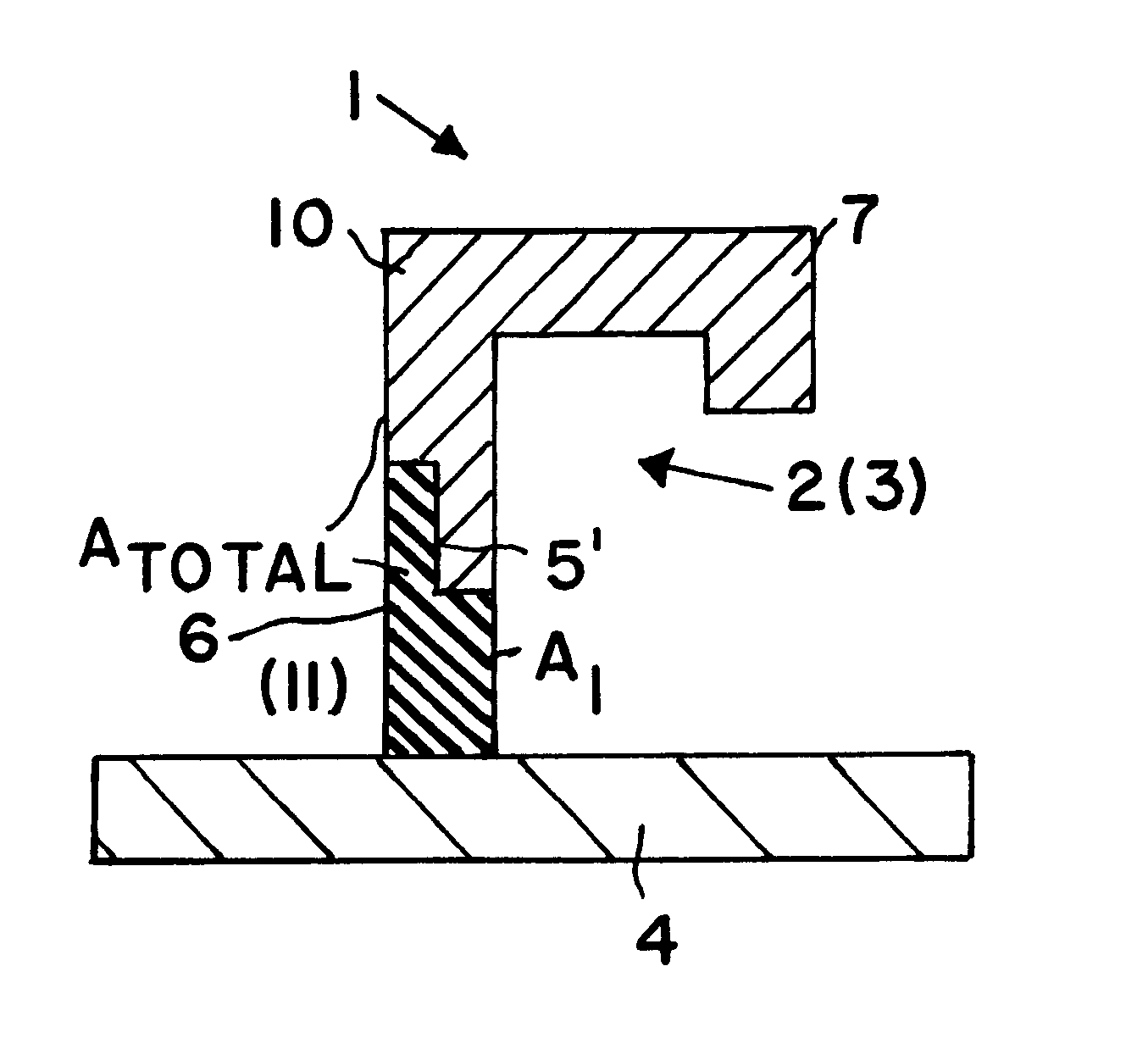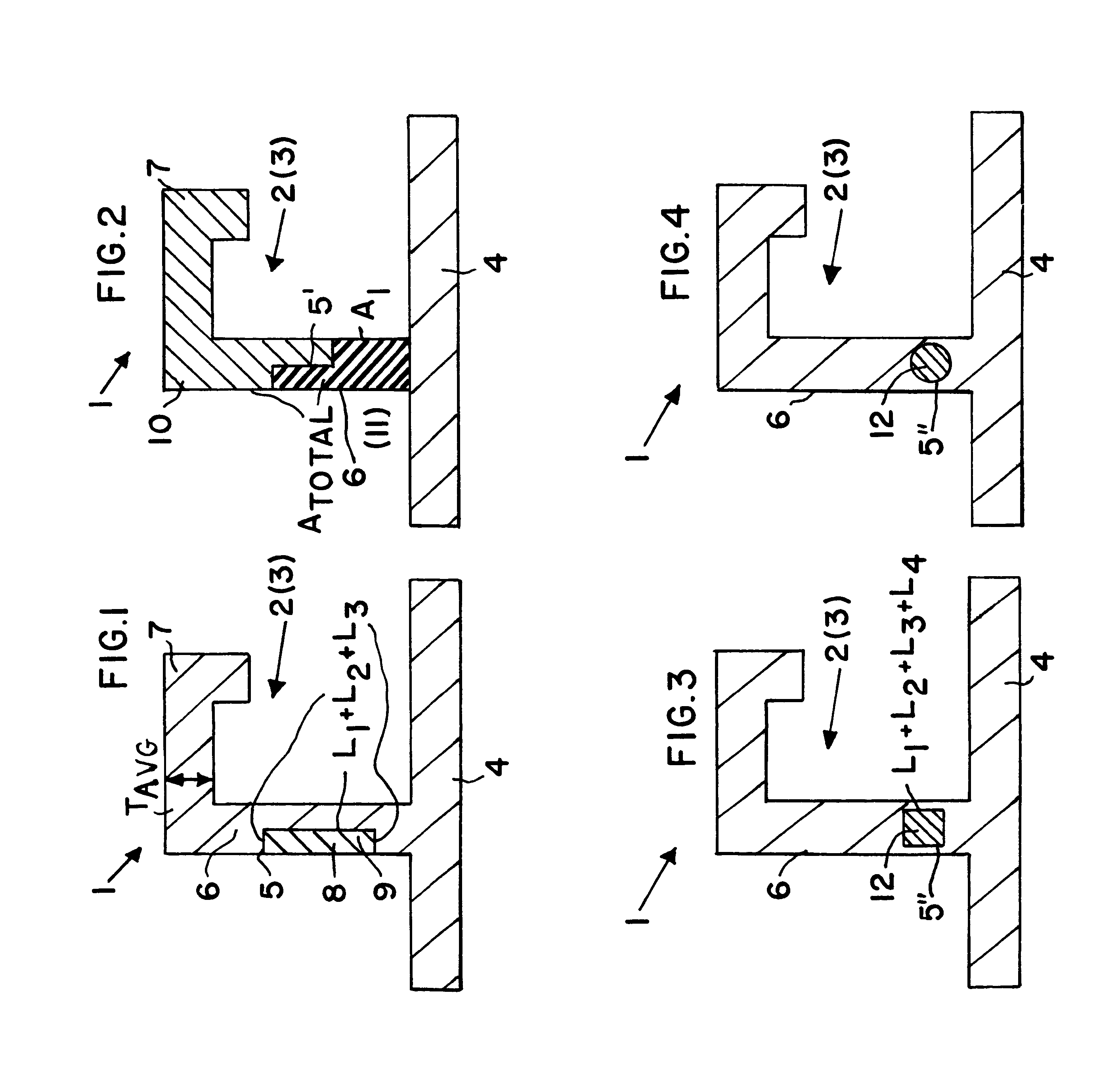Metal structural component for an aircraft, with resistance to crack propagation
a technology of metal structural components and aircraft, applied in the direction of fuselages, transportation and packaging, spars/stringers, etc., can solve the problems of cracks or rips in reinforced, i.e. strengthened, metal skin sheets, and tend to propagate along the skin sheets
- Summary
- Abstract
- Description
- Claims
- Application Information
AI Technical Summary
Benefits of technology
Problems solved by technology
Method used
Image
Examples
first embodiment
The above described boundary surface 5 is formed by providing a first part and a second part to make up the overall stiffening profile member 2, 3. In the present first embodiment of FIG. 1, the first part of the stiffening profile member 2, 3 includes a stringer web 6 and a stringer head or flange 7 that is integrally formed or connected with the stringer web 6. The stringer web 6 is integrally connected with the skin sheet 4 along a base or pedestal edge of the stringer web 6. The second part comprises a partial component 8, here embodied as a narrow rectangular sectional profile member, e.g. having an .vertline.-profile. This partial component or .vertline.-profile member 8 is let into a correspondingly shaped recess 9 in the side of the stringer web 6. Various joining methods can be used for joining the partial component or .vertline.-profile member 8 into the stringer web 6, for example by means of adhesive bonding, soldering, press-fitting, or the like.
In any event, with such ...
second embodiment
FIG. 2 shows a cross-section through an inventive structural component 1 in the area of a stringer 3 integrally arranged and connected on a skin sheet 4. An internal boundary surface 5' has been incorporated into the stiffening profile member 2, 3 of this integral structural component 1, in that the stiffening profile member 2, 3 is made up of a first part comprising a web base or pedestal 11 that is integrally connected with the skin sheet 4, as well as a second part comprising a separate partial component 10 that includes a second portion of the stringer web 6 and a stringer head or flange 7 provided thereon. The stringer web pedestal 11 forms a first portion of the stringer web 6. The two separate parts, i.e. the partial component 10 and the stringer web pedestal 11, are connected to each other in a non-integral manner, using any conventionally known differential joining technique, such as adhesive bonding, soldering, compression-joining, etc., whereby the internal boundary surfa...
third embodiment
FIG. 3 shows a cross-section through a further third embodiment of an inventive structural component 1 in the area of a stiffening profile member or stringer 2, 3 integrally connected with a skin sheet 4. An internal boundary surface 5" is formed within 20 the integral structural component 1, by incorporating a second separate component 12 within a stringer web 6 of the overall stiffening profile member 2. In this embodiment, the geometric form of this component 12 is preferably rectangular or quadratic, and particularly square as shown in FIG. 3. However, it is possible to alternatively provide such a second component 12 with a different cross-sectional shape, such as a round circular cross-sectional shape as shown in FIG. 4, or a polygon shape.
Just as described in connection with the first embodiment above, it also pertains here that the sum of all of the boundary surface lengths L.sub.1, L.sub.2, L.sub.3 and L.sub.4 is preferably greater than or equal to the average thickness of ...
PUM
 Login to View More
Login to View More Abstract
Description
Claims
Application Information
 Login to View More
Login to View More - R&D
- Intellectual Property
- Life Sciences
- Materials
- Tech Scout
- Unparalleled Data Quality
- Higher Quality Content
- 60% Fewer Hallucinations
Browse by: Latest US Patents, China's latest patents, Technical Efficacy Thesaurus, Application Domain, Technology Topic, Popular Technical Reports.
© 2025 PatSnap. All rights reserved.Legal|Privacy policy|Modern Slavery Act Transparency Statement|Sitemap|About US| Contact US: help@patsnap.com


